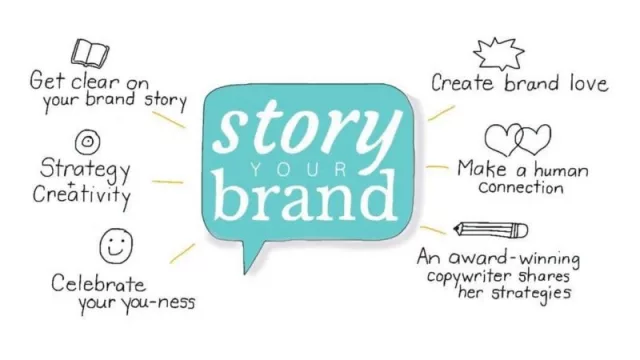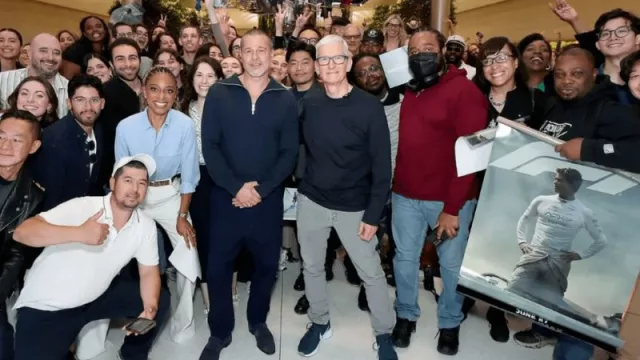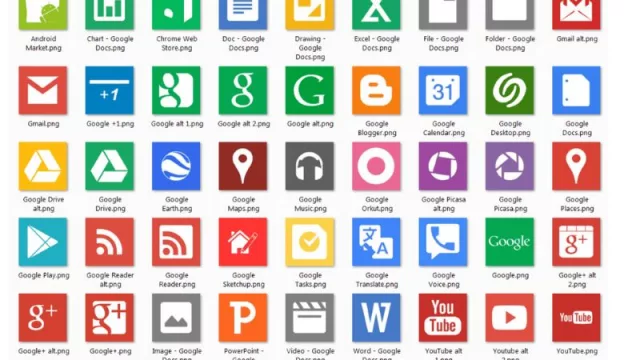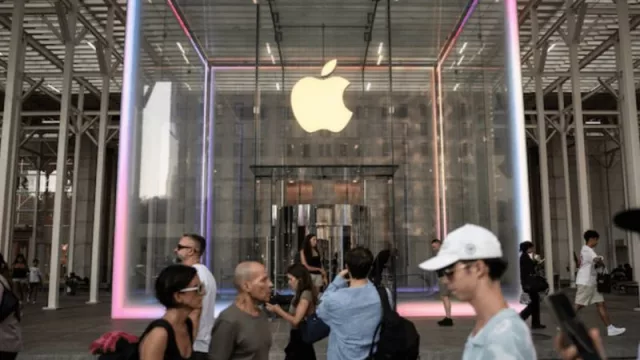Your client wants to get something, but an obstacle prevents it. Your reason for being is to be your guide, eventually, you will need the encouragement or help of someone else (you and your brand) to achieve your goal. To do this, you must earn their trust with your message and by showing them the plan to achieve their goals (the solution, your product or service). Through this simple model, you can put together a whole plan of how to capture the hearts of your customers.
The digital marketing boom, every day needs more than one strong strategy made up of 5 keys, in order of priority, for every brand:
1. Strategic Marketing.
2. Branding & Brand Content.
3. Cross Marketing.
4. Cross Channels.
5.Cross Media.
The market has matured, has become aware and has accepted that only doing part of the work does not achieve sustainable and differential results.
To better achieve these 5 keys, today there is a great strategic tool to design the essence of a brand and its actions, be it a micro-enterprise or a multinational super corporation.
This new and powerful tool (integral/cross), is very solid and is being used by many brands around the world, its main strength is to deconstruct a lot of false knowledge.
How is the StoryBrand (SB7)?
Clear, simple and fundamentally deconstructing decades of very limiting myths and dogmas, it has been proven to help companies get to the heart of the brand message. It helps to loosen the rigid position, it helps to have a very global and very punctual look at the same time. It helps to doubt everything that is "imposed".
Many times the "formats" tend to generalize messages, aesthetics, colors, types of photos, fonts, designs, videos, tones, "quantity" of texts.
That is the same as using a “filter”. That is not Branding, it is not doing what people want, it is doing what an app says to do.
Not always simple and attractive, it is short, or little. We must not confuse simplicity with narrowness.
Speaking live, it seems that if you do some current hacks/shortcuts in digital MKT, you get results, because you get likes. Trending network users like it, it's trendy and it's cool, but the reality is that it has nothing to do with Marketing. There is no differentiation. It's all the same, and today it's a serious mistake, above all a product of biased vision and inexperience and the fear of not being current.
It is clear that this consumer trend is used by audiences, but that is the big trap, and you have to get out of the paradigm where it seems that the big winner is only Meta, Google, Tik Tok. It's not about going against this, it's about being more than this.
If we take it to a simplistic example, it is when a client decides to change the personalized branding for a design "that Instagram" or the common one of the users propose. It is a path to an empty egotistical recognition, without construction.
The problem with this is that many times it is rationalized as "design", in reality it is a lack of design.
For example, if we have a bar, we focus on only posting divine photos of cocktails... surely we will get thousands of likes, but those photos are almost the same as thousands and thousands of photos, which have neither a brand pattern nor a "speech" They don't build anything, and they don't have any path of development of who the client is, what the brand is, what solution we give.
Be careful not to confuse what certain operators in the world of networks and content lower lines of what is trending, and apply it as the general strategy; instead of running it as just one part of many more things that need to be done aligned with something stronger and more strategic.
The Author of StoryBrand, Donald Miller, helps us develop a solid, broad, deep strategy that has nothing to do with a minimalist "fashion", or biased by tastes, but with a clear message, to be different from everything and not a single style of photos, of copies, of lexicon.
The basic premise is to clarify your message so that customers will listen.
How should the message be?
It should be easily repeatable. It's simple, relevant, (different), repeatable, and it's one that everyone in the company is clear about.
The reason is that the human brain stays away from confusion and always seeks clarity.
It should be thought about how many sales are lost because customers cannot tell what our offer is five seconds after entering the website, since the brain does not know how to process the information, but it is the secret behind famous companies that create lots of simple connectors all the time to build trust.
Storytelling helps to put everything in order so that the brain does not have to work to understand what is happening. The more predictable the communication, the easier it is for the brain to digest.
It goes far beyond “features versus benefits”, or a vertical photo, or a type of photo that is used, it is not just the use of trendy minimalism, or a trendy theme and treatment.
It focuses on creating true empathy and connection to the heart of your brand message. For that you need more than an influencer or a cool photographer or an expert in networks. It takes an attitude and culture (and a diverse team) focused on understanding the customer story to make a great story together.
· Marketing does not solve your company's problems, it solves the problems of your brand's customers.
· Marketing does not do what the owner likes, neither at the times, nor in the way the owner wants, it does so in the right atmosphere for your client.
· The other big mistake is to believe that our "target" is only a certain stereotype of the consumer, that is archaic.
Companies that have effectively implemented StoryBrand (SB7) have seen amazing growth and results; some have doubled their revenue or increased their size by up to 60%.
The StoryBrand consists of 7 parts that help you delve into each piece of your brand's story. Also called SB7 scheme – it is a storytelling technique where our client, the main character, faces a problem.
This is the basics:
A character (the hero, who is your client) has a problem and meets a guide (your brand) who gives him a plan and prompts him to take an action that ends in success and helps him avoid failure.
That's all. So simple and clear?
Your client wants to achieve something, but some obstacle prevents it.
And here you enter the story.
The story identifies relevant aspects:
a necessary ambition
The challenges fighting to prevent us from achieving that ambition
A plan to achieve it
To become an expert storyteller (and hero recruiter), you must learn:
How to create a StoryBrand in seven steps.
Which StoryBrand template you can use.
The first thing to change:
To know what to tell in your client's story you must know your client thoroughly. In depth, it is neither asking how they would buy from you, nor googling their searches, nor looking at their Instagram. It is literally putting you in his skin, his soul, his day to day, in his heart.
Without a clear definition of your Buyer persona or your Reader persona, everything is wrong.
Don't fall for stereotypes. Your clients are not always the highest segment and the children of generation Z. That is simply not what defines your client.
People have a soul, not a label. Targeting is obsolete.
1. The protagonist (not you), the hero is your client, you are the co-star.
Without humility, there is nothing
You must understand that the protagonist will never be you (as a company).
The ego of the brand is in decline, and of the ego advertising or ego Management, too..., the great mistake of great gurus, or of great makers and business owners who know everything, no longer resist competitiveness. You have to know how to co-create.
Co-creating is everything.
The protagonist is always our client. The story that interests each person is their own, not that of an entity "with more than a hundred years selling the best products". But don't fall for the cliché either, in being a white label seller. It is creation, you are not a filter of an app.
The customer is someone who wants something. As simple as that.
2. Your client has a problem. You need to connect with that problem.
The most obvious problem, an obstacle that we cannot control.
Fear, limitation, insecurity... inside the mind of the protagonist.
Philosophical. A deeper question that motivates (or demotivates) the hero.
3. Your client needs a guide, be their guide.
Because you are not the protagonist, but you do play a fundamental role in the story of your client.
The guide must meet two characteristics:
A) Being empathetic (that they know you, understand you and see in the brand something more than a cold company) and here is almost the entire commercial problem:
Selling is a big problem, not only for your brand, but for the customer. Selling is a mess.
Being bought is a huge deal, because you have to do whatever it takes to be good enough to be chosen.
Being bought from you is a great satisfaction that feeds your client and you.
Selling only feeds you. It's part of a very old way of telling stories.
For this reason, Marketing is not making "the minimum effort to obtain the greatest result", it is doing "everything necessary, in the best possible way, in every sense of the word, to obtain the best results".
B) Have authority (in short, know what you are talking about).
4. You need a plan. The plan is important in the story.
You can't be a good guide if you don't have a good plan up your sleeve.
The plans that your brand should offer your client consist of two keys:
· A concrete process, or route to follow (Where I am going, what will happen on the trip and where I arrive).
Be careful, it is much more than the so-called "Customer Journey".
Human beings are a great mix of aspects, not a rational search: we are physical, emotional, spiritual, we have many senses, feelings, we are not virtual beings.
Neuromarketing Principle 1: We are emotional beings who reason.
It is a prison for the human soul and for happiness, (even though there is a huge push that "almost" has us imprisoned on the screens) just thinking that with a digital store, we can solve the problem for our client, is a great error.
Take a look here at the urgent need to evolve in e-commerce.
The Internet is a great help, not the purpose.
· A clear agreement (your messages and ideas that you offer to the protagonist as a guide).
5. You have to call him to action every time.
Always, it is not when you have excess US$, or when you lack sales, that is not why you should always call for action; it is because you are his guide, it is not about you, it is about him, otherwise you do not understand anything.
You can be direct (on a map you would be a huge cross with the message "get here", on a website a well-implemented CTA) or transactional (something that attracts their attention, a "you give me I'll give you". Lead magnets such as ebooks, discounts, samples…).
You will need to add more than one little push, (yes, with sense) to the story that you are forming. Currently, the client loses interest very quickly.
The nudges are throughout the entire story.
6. Success is a way of traveling. Show success.
Show them the achievements. There is no arrival, only, there is a successful way to travel.
To communicate success to your client, you should put them in the ideal situation, that is, tell them directly where they are going to be, arrive or achieve thanks to your plan.
7. Show what happens without your plan. Show failure.
It is a story, and in stories there are endings, happy and not so happy. It shows what happens without your plan, don't lie, but it is also your story with him, taking care of this story is showing what happens without your plan.
All businesses have two enemies, one is the external one or more, but many times the most important is their own noise, the message must be simplified. The key is to have a very professional process, with times and teams with a very cross vision to carry it out. Search for the essence of the brand in simple and relevant messages that we can repeat over and over again to get through. People don't buy the best products, they buy the ones they can understand the fastest.
Two more points can be added to the SB7 scheme:
· The evolution of the protagonist. The guide (your brand) must make the character change completely from the beginning to the end of the story.
Now he knows the longest way, he is not afraid and he is going for more and better, so you must also go for more and better.
· The macro is the micro. And vice versa.
Distinguish and unite.
The context, the competition, the climate, the humor, the competitors, are part of the life of your client. Don't be arrogant, the global market and marketing on the block have everything in common and nothing. It depends.
That is why Strategic Planning is so important.
The same does not happen to your client in Vive Venezuela, who lives in Doral (Miami), and they are both Venezuelans of the same age, and with the same profession, for example. Some things are the same, others are not.
But say that what your competitor is doing is "another" niche. If that product affects the same problems as your solution, to the same Buyer persona, it is not a "macro" issue, it is that in the story they are taking you out of the script.
What template do I use to facilitate my StoryBrand?
Donald Miller has his own template, which he calls the 7 principles of the StoryBrand Framework. We leave it here in image.












Tu opinión enriquece este artículo: